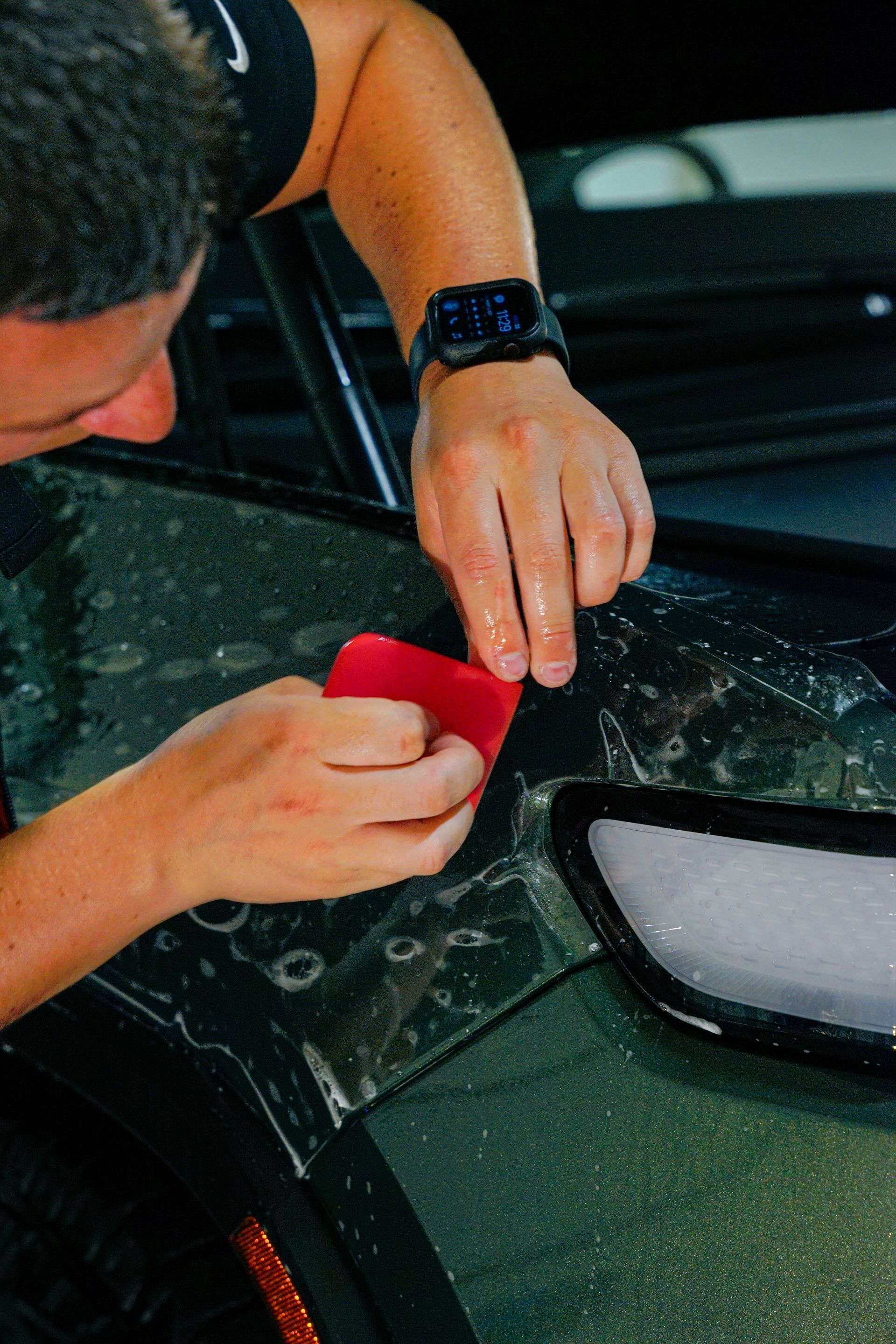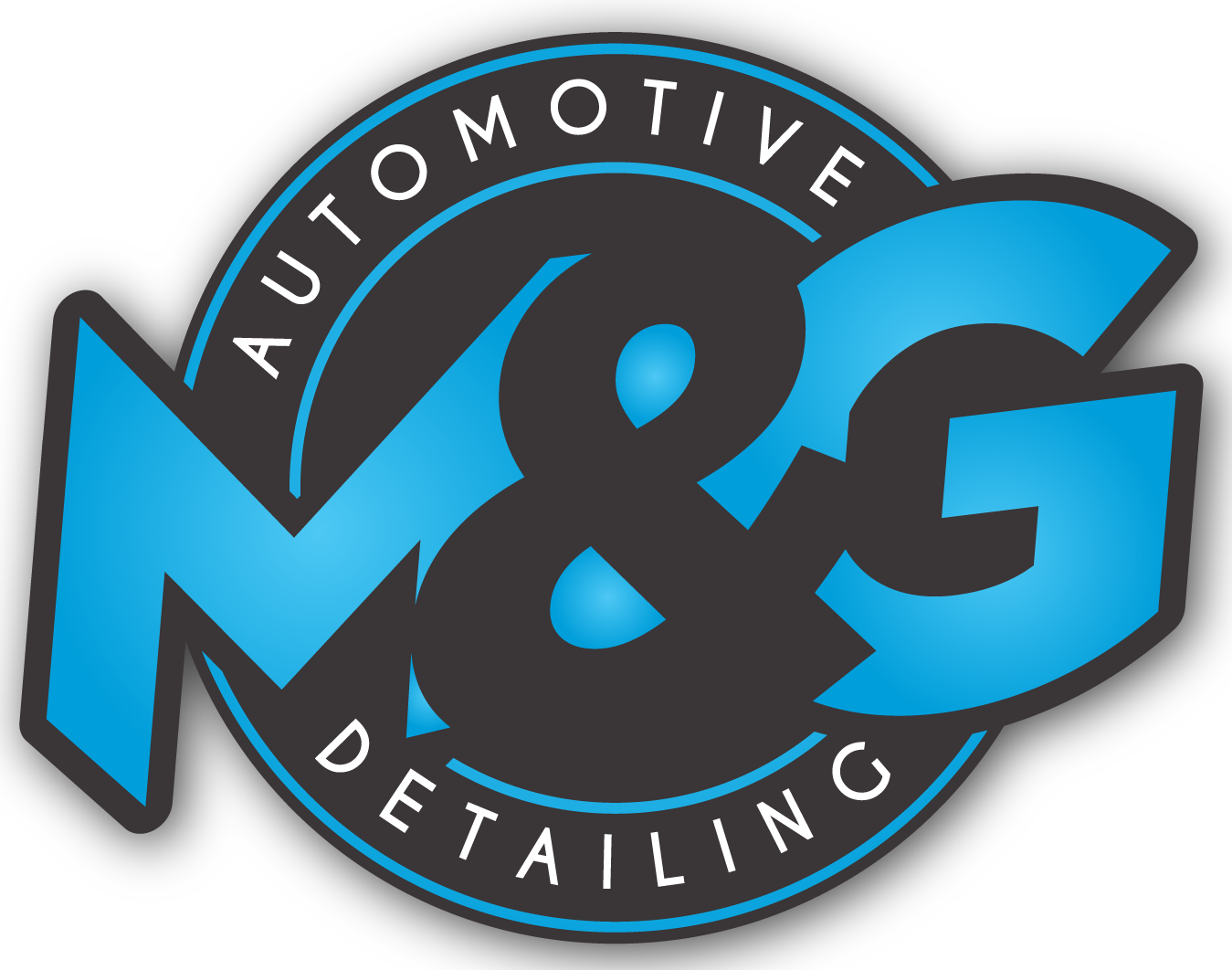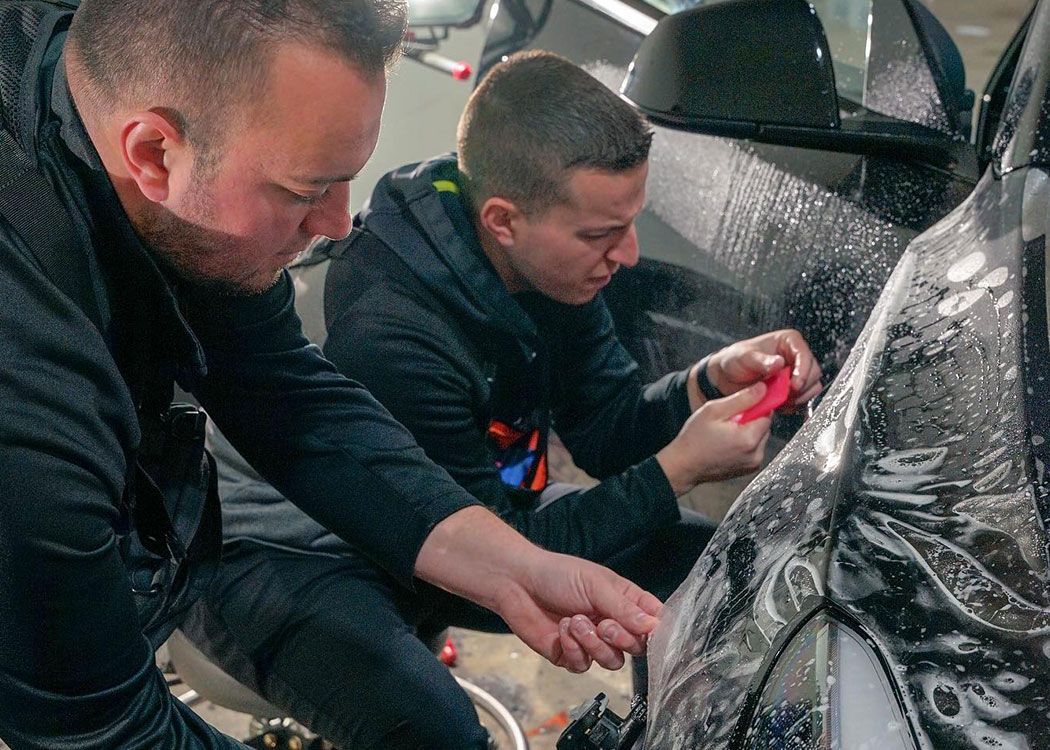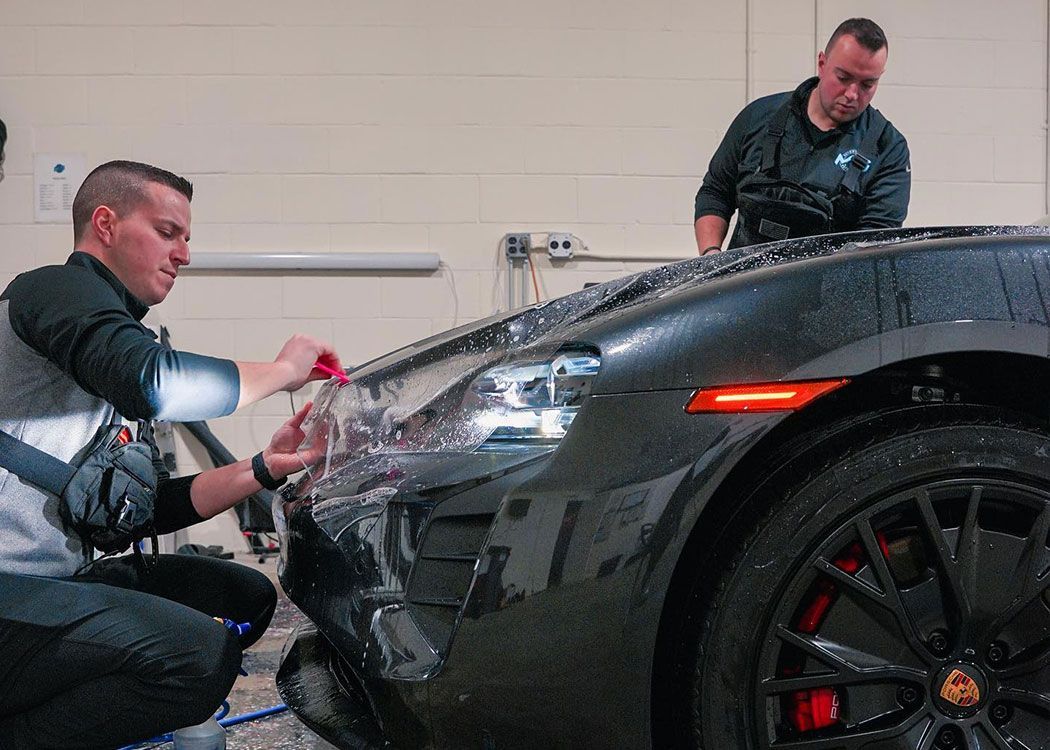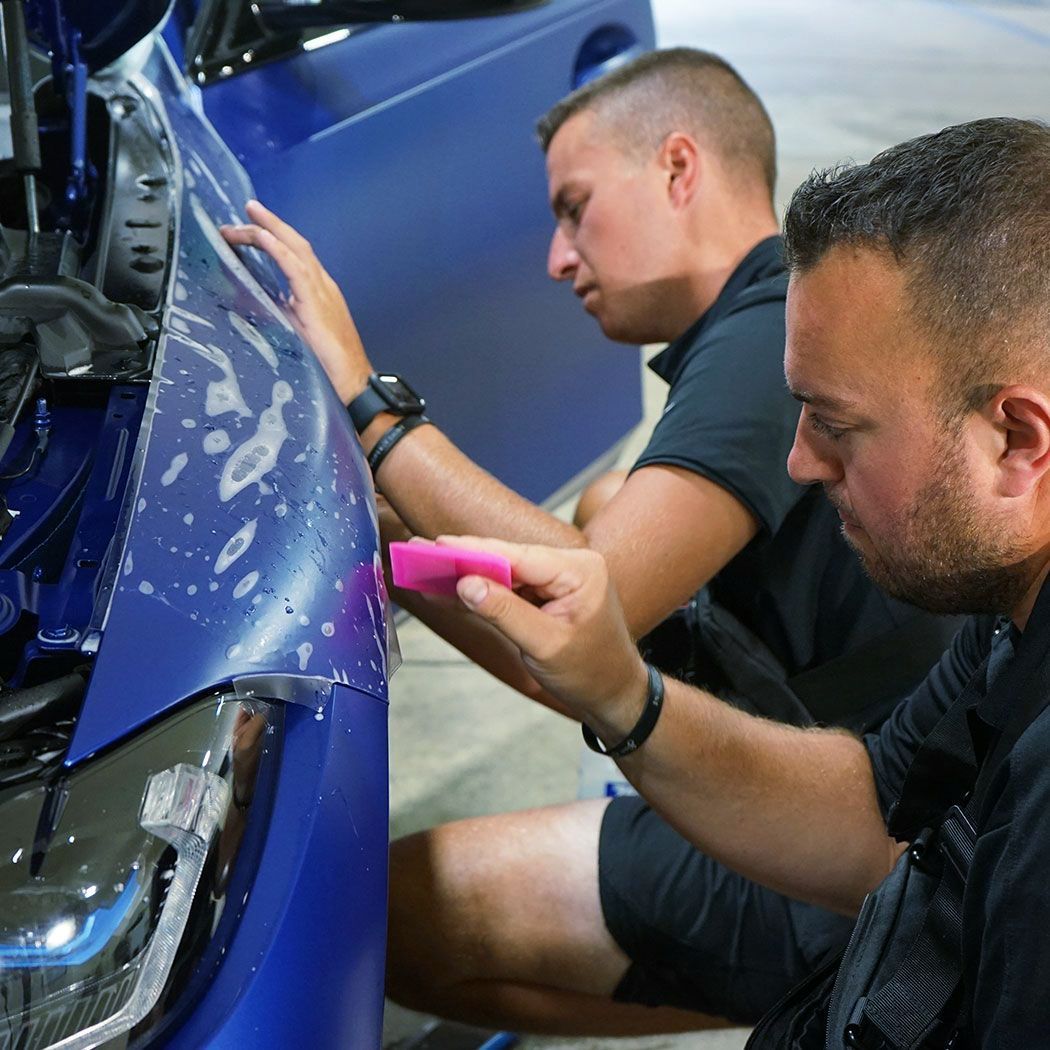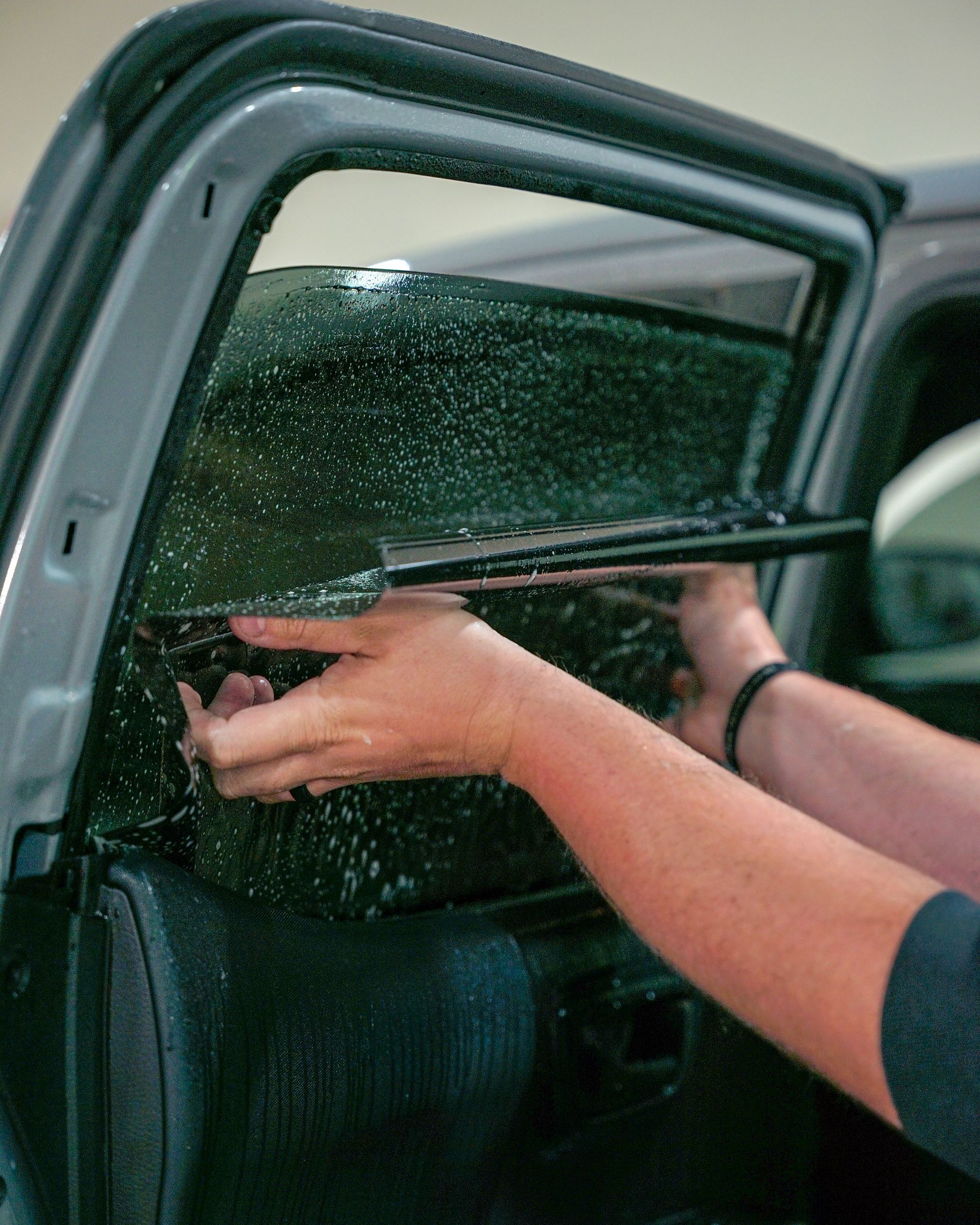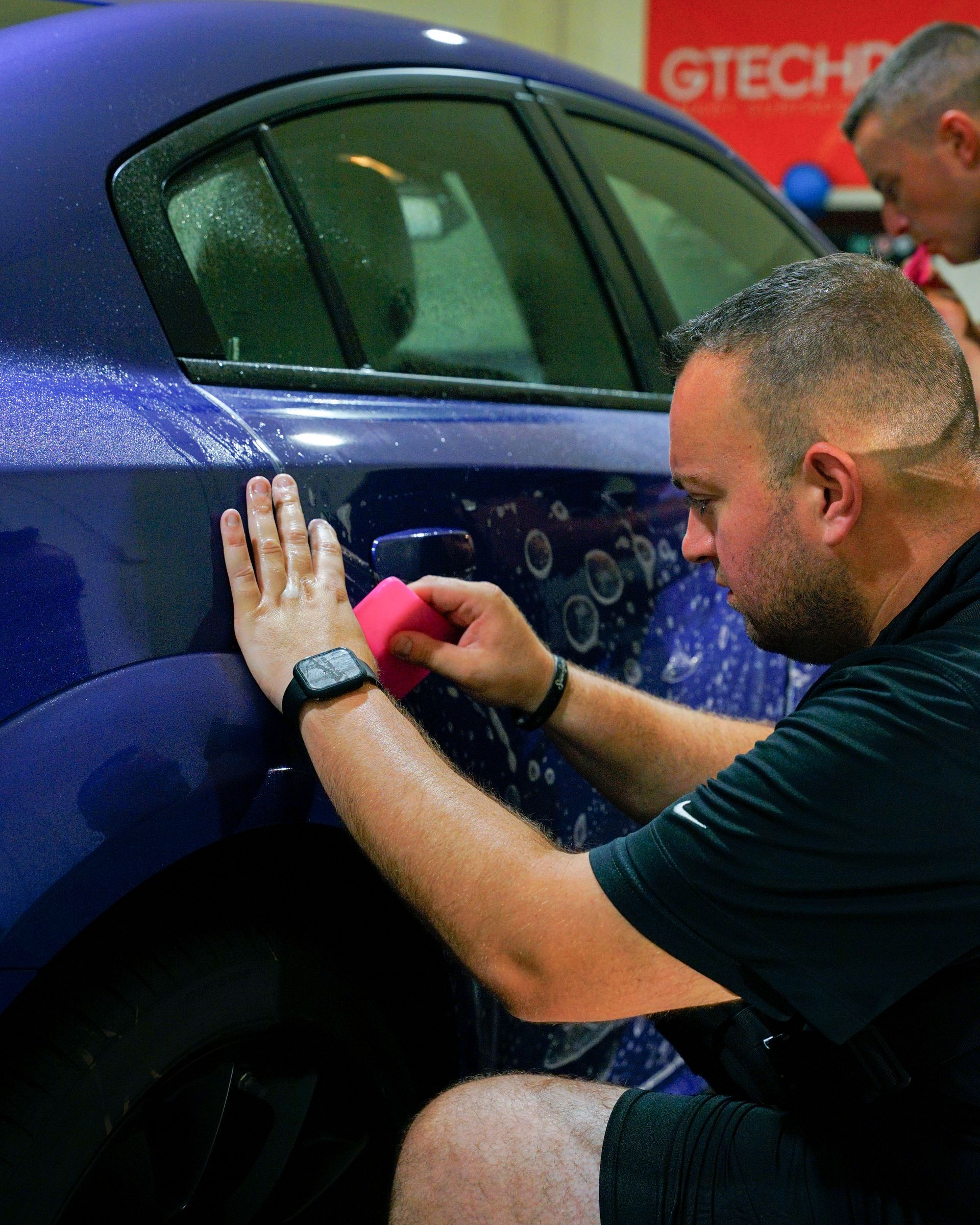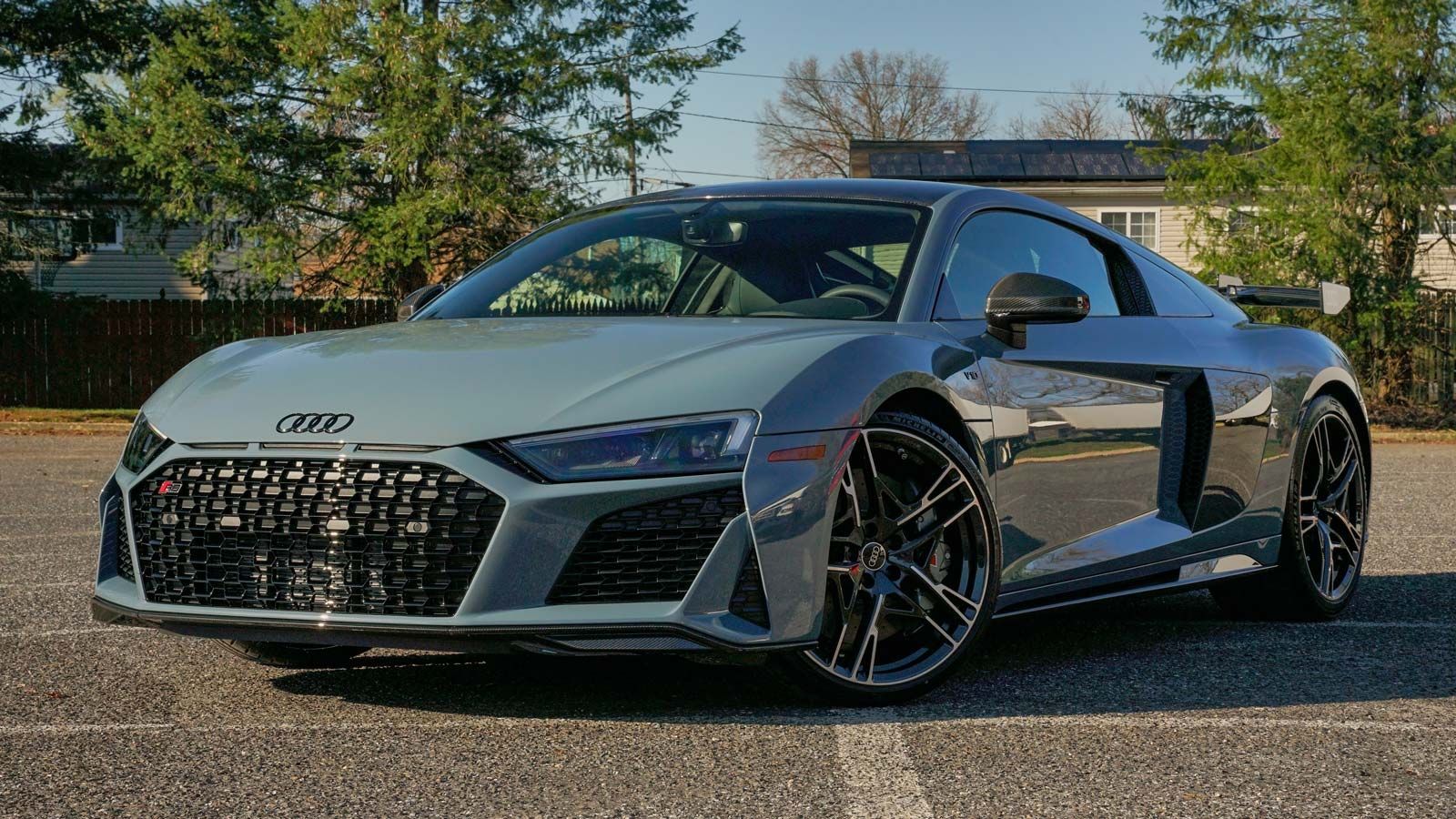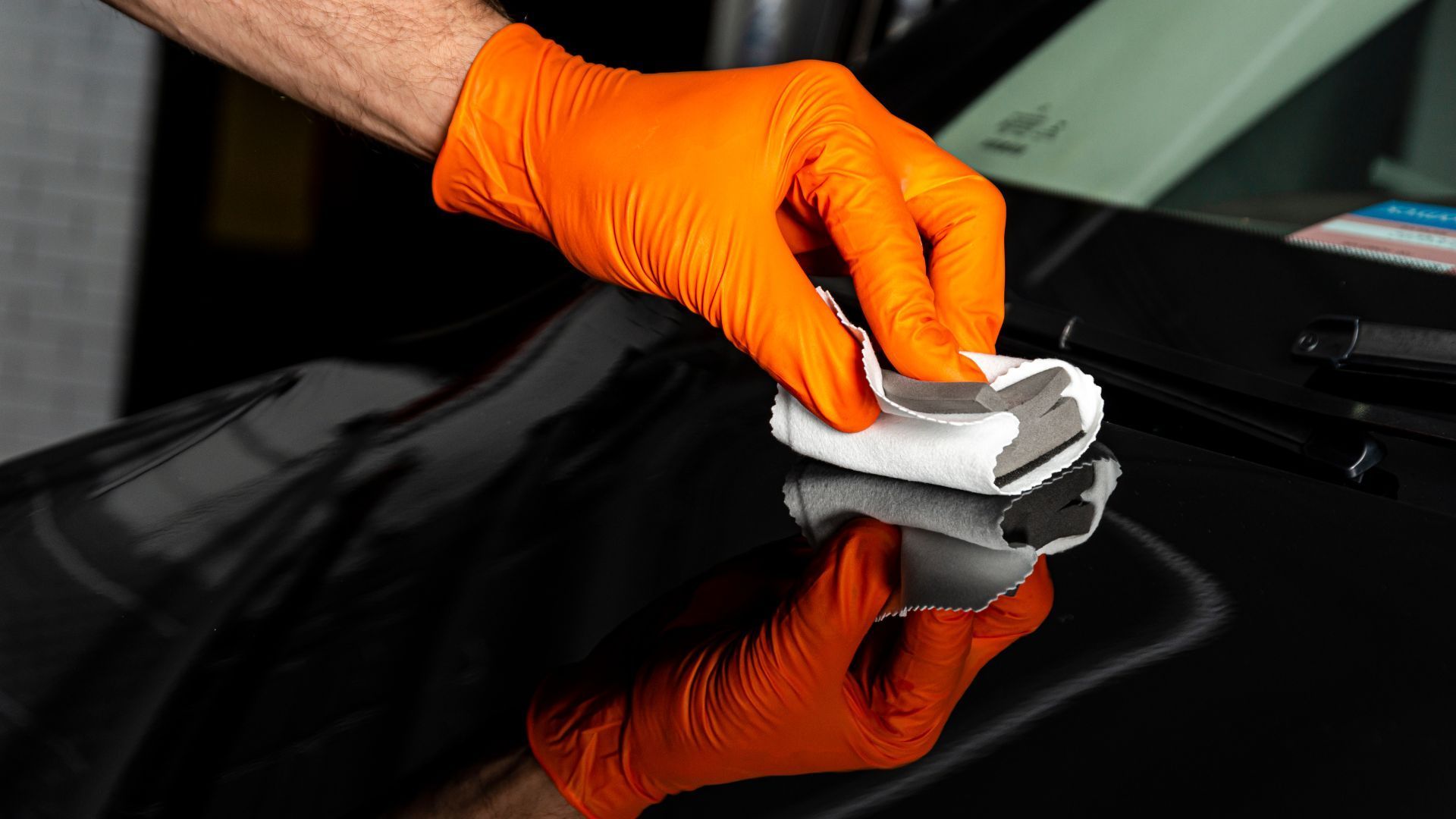Top Reasons Why You Should Choose PPF Instead of Paint Sealants
When it comes to protecting your car’s paint, the options can be overwhelming. You might find yourself wondering whether a paint sealant is enough or if a Paint Protection Film (PPF) is really worth the extra investment. Imagine this: your car glides out of the showroom, pristine and shiny, but just a few months later, those pesky scratches and fading colors start to dull its beauty. In this article, we’ll explore why choosing PPF offers superior protection compared to traditional paint sealants—not just in the short run, but for years down the road. After diving into the benefits and unique features of PPF, you'll see that keeping your vehicle looking its best isn’t just about choosing wisely; it's about making an investment in long-term care.
Choosing Paint Protection Film (PPF) over paint sealants is advisable due to its superior durability, lasting between 5 and 10 years, while sealants typically require reapplication every 3-6 months. Additionally, PPF offers robust protection against scratches, UV damage, and environmental contaminants, making it a more effective long-term solution for safeguarding your vehicle's paintwork.
Why Paint Protection Film (PPF) Stands Out
One of the most defining characteristics of PPF is its ability to provide maximum protection for your vehicle's paint. Unlike traditional waxing or sealants, which may offer a basic layer of defense, PPF acts as a formidable barrier against a range of potential threats. It effectively shields your car from rock chips, scratches, and road debris that can cause unsightly damage.
Picture yourself driving through a construction site or navigating unpaved roads; without PPF, your vehicle's exterior could quickly show signs of wear and tear from gravel and branches. However, with PPF in place, those minor impacts barely leave a trace, allowing you to enjoy your adventures without worrying about cosmetic harm. As if that level of protection wasn't enough, another groundbreaking feature of PPF is its self-healing properties. Imagine a sunny day where you take your car out for a drive and accidentally scratch the surface on a branch while pulling into a tight space. With traditional methods, you'd have to live with that blemish until you found the time and resources to fix it properly.
Yet, with self-healing PPF, simply leaving your car in sunlight or applying gentle heat will allow minor scratches to warm up and vanish before your eyes. This innovative capability ensures that the film looks pristine even after occasional mishaps—something every car enthusiast can appreciate when aiming for that showroom finish. Additionally, consider the practicality of removability without damage. While some paint sealants can bond tightly with the paint, risking damage upon removal, PPF offers a reassuring promise: it can be taken off cleanly without harming the underlying paint job. This is not just advantageous for maintenance but also vital for preserving the resale value of your vehicle.
When it comes time to trade in or sell your car, having an intact factory paint job is worth its weight in gold—potential buyers are more likely to appreciate a vehicle that has been well cared for and remains aesthetically pleasing. Understanding these features allows us to appreciate how they contribute to superior performance over time and the investment you're making in vehicle protection.
Durability and Longevity of PPF
The lifespan of Paint Protection Film (PPF) is one of its most compelling features. Thanks to advancements in technology, these films can now provide exceptional durability—with proper care, stretching their life between 5 and 10 years. This is impressive compared to traditional waxes and paint sealants, which generally require reapplication every 3 to 6 months to maintain their effectiveness. Imagine spending less time enduring the routine of frequent waxing or sealing your car! It’s like trading a bicycle for a smooth-riding car—it simply makes more sense.
- Long-Lasting Durability: Investing in PPF means fewer worries about frequently applying additional layers of protection. While traditional methods work well, they can’t quite match the sturdy resilience of modern PPFs. By eliminating regular reapplications, vehicle owners can save both time and money while ensuring their aesthetic finish remains intact for years to come. But what about different weather conditions? How does PPF hold up against nature's elements?
- Weather Resistance: One standout characteristic of PPF is its ability to maintain integrity through varied weather conditions. Whether you're facing blazing hot summers that may otherwise fade your paint or bitterly cold winters that threaten freezing temperatures, PPF has you covered. Its robust design allows it to withstand extreme conditions much better than traditional sealants, which can degrade and lose effectiveness when subjected to harsh environments.
This level of robustness means fewer worries for car owners regarding constant reapplications in unpredictable climates. For those who live in regions where weather variability is the norm, opting for PPF emerges as an appealing choice for long-term solutions. It's not just an investment in appearance; it’s an investment in endurance against nature’s forces while preserving the vehicle's value. Next, we'll examine the significant role UV protection plays in maintaining your car's finish and overall aesthetic appeal.
Benefits of UV Protection
UV protection is a crucial feature that sets Paint Protection Film (PPF) apart, ensuring that your vehicle's exterior remains as stunning as the day it was purchased. When you invest in PPF, you're essentially providing your car with an invisible shield against the sun’s harmful rays. Prolonged exposure to sunlight can lead to a variety of problems, including paint fading and oxidation. That's where the beauty of PPF comes into play—it offers a robust barrier against these elements.
Think about it: the sun relentlessly beats down on cars, causing vibrant colors to dull over time. A quality PPF acts like sunscreen for your vehicle, allowing it to withstand the relentless assault from UV rays. The science behind PPF lies in its thickness and composition. Thicker films offer more effective shielding than thinner alternatives, which often compromise their protective capabilities. PPF is designed not just to resist scratches and pollutants but also to absorb and deflect harmful UV radiation before it even touches your car’s paintwork. This functionality ensures that your car maintains its lustrous appearance for years while simultaneously preserving its resale value.
Consider two scenarios: one with a car featuring high-quality PPF and another with traditional paint sealant. The former remains vibrant and eye-catching long after it's been parked under the hot sun, while the latter begins to show signs of wear and fading. Customers often find that their investment in PPF pays off through aesthetic maintenance and extends the life of their vehicle’s finish.
Why UV Protection Matters
- Prevents Color Fading: Cars parked outdoors regularly can suffer severe color changes due to prolonged sunlight exposure. PPF minimizes this through its potent UV-blocking capabilities.
- Reduces Oxidation Risk: Regular paint can oxidize when exposed to UV rays, leading to a chalky appearance. PPF helps retain the integrity of the color and finish.
- Enhances Resale Value: A well-maintained exterior is attractive to potential buyers; investing in PPF means you’re safeguarding against unsightly damage that could decrease your car’s market worth.
This proactive approach not only safeguards your vehicle's appearance but also lays the groundwork for an informed decision when weighing protective options for your car's surface.
PPF vs. Sealants: A Comparison
To understand the differences between Paint Protection Film (PPF) and traditional paint sealants, we can break down their features and benefits, painting a clearer picture of why one might be more suitable for a particular driver than the other. At first glance, it may seem that both options are designed to protect your car’s exterior; however, a deeper look reveals significant distinctions that could influence your decision.
Analyzing this comparison brings forth compelling insights. Durability is vital when considering longevity. PPF often boasts a lifespan of 5 to 10 years, far exceeding the 3 to 6 months typical of paint sealants. This extended durability means less frequent replacements, making PPF not just a protection measure but also a long-term solution. Imagine being able to enjoy that just-out-of-the-showroom shine without anxiety about wear and tear from everyday use.
Additionally, scratch resistance becomes a game changer. With excellent scratch resistance offered by PPF, you’re not as susceptible to chips from rocks or debris flung up on the road. In contrast, paint sealants provide only low scratch resistance—leaving your vehicle vulnerable over time. If you often find yourself driving on abrasive surfaces or parked amidst bouncing kids playing in the driveway, opting for PPF makes practical sense.
Now let’s talk about cost. While PPF requires a higher initial investment, think of it this way: it's similar to buying quality footwear versus disposable sneakers. By spending more upfront on PPF, you're securing superior protection and minimizing future costs associated with frequent maintenance or repainting that might arise from lesser shield solutions.
In terms of maintenance, another key point surfaces. Paint sealants require ongoing upkeep, necessitating regular applications and careful care routines to maintain effectiveness. In contrast, once PPF is installed by professionals—a task that can be quite skilled given its specific application processes—it demands considerably less attention. It almost feels like putting up an impenetrable shield over your car.
Choosing between these two options doesn’t just come down to price or ease—it’s about understanding your needs as a driver and how much protection you genuinely want for your vehicle. Next, we will explore how the differences in installation procedures play a crucial role in maximizing each method's effectiveness.
Application Process Differences
- Professional Installation Required for PPF: The installation of Paint Protection Film requires professional expertise to ensure that every detail is meticulously handled. The process begins with an intense cleaning of the vehicle's surface, removing any dirt, dust, or contaminants that could interfere with adhesion. It then involves precise cutting of the film to fit the contours of the vehicle seamlessly—a skill that professionals have honed over time. This careful attention ensures that when the film is applied, it adheres correctly without any air bubbles or wrinkles. Just imagine how frustrating it must be to see bubbles forming after all that investment! Therefore, professional installation guarantees optimal performance and maximum protection from scratches and environmental damage.
- DIY-Friendly Sealants: In contrast, paint sealants are more friendly for those who enjoy a little hands-on work. Their application is generally straightforward, making them appealing to car owners looking to save on costs or indulge in some weekend maintenance. You can wash your car, apply the sealant with a clean cloth or applicator pad, and buff it out—all within a couple of hours right in your driveway. However, this DIY approach comes with its own set of challenges. If a sealant isn't applied evenly or if it’s left on too long before buffing, you may find yourself with streaks or patches that diminish not only the effectiveness but also the appearance.
Remember, while DIY methods can save you money initially, improper application may lead to deeper issues down the line that require professional attention. Assessing these processes illustrates essential differences that impact your vehicle's protection strategy. Next, let’s turn our attention to understanding the financial implications associated with these protective options.
Investment and Cost Analysis
One of the primary considerations for vehicle owners is the cost associated with each protective option. At first glance, Paint Protection Film (PPF) appears to require a significant initial investment compared to traditional paint sealants. The installation cost for PPF typically ranges from $1,000 to over $8,000, depending on various factors such as vehicle size and the extent of coverage desired. For example, partial wraps may start around $1,000, while full vehicle coverage can reach upwards of $10,000. Meanwhile, paint sealants generally sit within a more accessible price range of $20 to $50 per application. However, it’s important to examine the long-term value each option offers before making a decision.
Long-Term Cost Efficiency
Although PPF's upfront price tag is considerably higher than that of paint sealants, its long-term cost efficiency cannot be ignored. PPF boasts remarkable durability and requires minimal maintenance. Once installed, it protects your vehicle effectively for years without the need for frequent reapplication costs. In contrast, paint sealants require regular applications—typically every six months to a year—which can accumulate significantly over time. When you assess how often you would need to refresh those sealants, the overall costs can easily outweigh that of a one-time PPF installation.
Many car enthusiasts advocate for PPF due to the peace of mind it provides alongside superior protection. John, an avid car enthusiast and owner of a Tesla Model S, shares his experience: "I invested in PPF for my Tesla Model S, and it has been worth every penny. My car still looks as good as new even after three years." This sentiment echoes among many who see their vehicles not just as transportation but as valuable investments worthy of protection.
As you weigh your options based on these insights, remember that choosing PPF isn't just about initial expenditure; it's about safeguarding your asset's value over time. In summary, investing in Paint Protection Film may seem costly upfront, but its long-term benefits in preserving your vehicle's appearance and value make it a smart choice for conscientious owners.
Leading PPF Services in Moorestown, NJ
Protect your vehicle from rock chips, road debris, and harsh weather with expert precision at M&G Automotive Detailing in Moorestown, NJ. Their top-tier paint protection film (PPF) services offer seamless coverage that preserves your car’s finish without altering its natural gloss. Trust the team at M&G to deliver a flawless install that blends innovation with craftsmanship—because your ride deserves nothing less.

